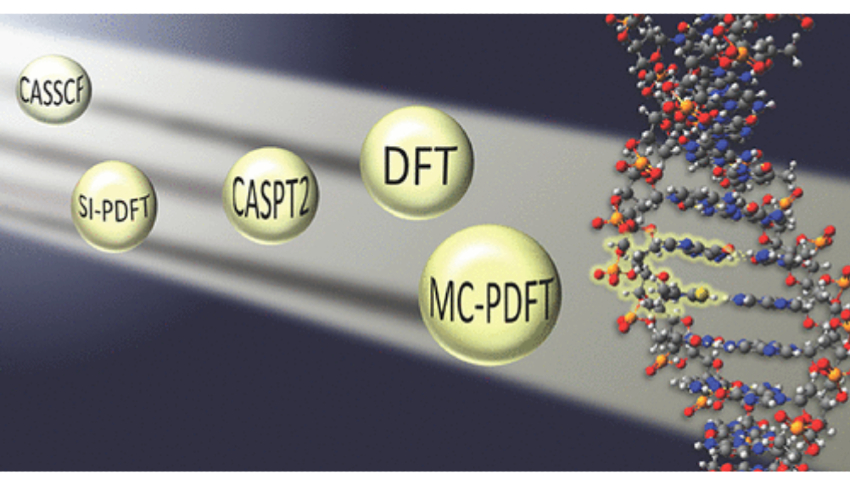Photochemistry
Light-induced processes play a central role in many areas of chemistry, physics, and biology. Molecules that are not reactive in the ground electronic states may undergo dramatic transformations under incident light and acquire valuable molecular properties and enhanced reactivity in the excited states. The photoexcited molecules can participate in chemical reactions, emit light, or relax to populate the lower-lying electronic states through a cascade of intersystem crossings and internal conversions. The time evolution of excited states can be predicted using molecular dynamics simulations or statistical kinetic theories. However, theoretical modeling of light-induced processes is challenging because of the multiconfigurational nature of electronically excited states. The electronic wave function is best described in such states by a linear combination of excited Slater determinants originating from multiple references rather than a single Hartree-Fock determinant. Thus, the multireference methods are essential to get insight into mechanistic details of light-induced chemical processes.
In 2014, we developed a novel approach to combine the flexibility of the multiconfigurational wave functions with the low computational cost of density functional theory. The new multiconfiguration pair-density functional theory (MC-PDFT) became a powerful tool for studying excited electronic states. Later, we derived the analytical state-specific and state-averaged MC-PDFT gradients for efficient geometry optimization. Using MC-PDFT with nonadiabatic transition state theory, we proposed a new relaxation mechanism in photoexcited triplet aniline, which is critical for understanding the photoprotective properties of aromatic amines. Using state-averaged MC-PDFT in nonadiabatic molecular dynamic simulations, we showed no population transfer to the triplet manifold in photoexcited thioformaldehyde even after several hundreds of femtoseconds. This observation is in excellent agreement not only with CASPT2 predictions but also with fluorescence measurement.



